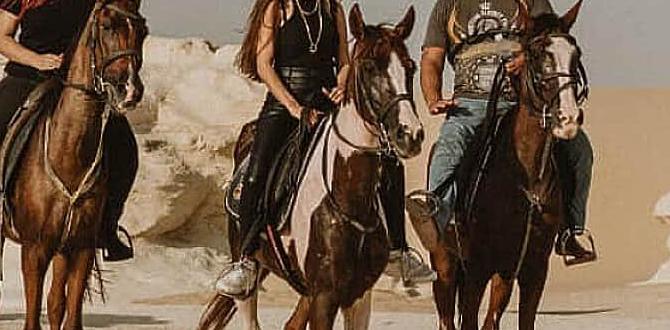To experience Barcelona with fewer crowds, aim for late spring (May-June) or early autumn (September-October). These shoulder seasons offer pleasant weather, fewer tourists, and better prices, ensuring a more relaxed and enjoyable visit.
Barcelona is a dream destination for many, bursting with iconic architecture, vibrant culture, and delicious food. But let’s be honest, nobody enjoys navigating packed streets or waiting in impossibly long lines. It can feel overwhelming trying to see Gaudí’s masterpieces or enjoy a tapas crawl when you’re shoulder-to-shoulder with thousands of others. The good news? You can absolutely experience the magic of Barcelona without the overwhelming crowds. Planning your visit during the right time makes all the difference. We’re here to guide you through the best times to go for a truly unforgettable and stress-free adventure.
Understanding Barcelona’s Seasons: The Crowd Factor
Barcelona, like many popular European cities, experiences distinct tourist seasons that greatly impact crowd levels, prices, and the overall vibe. Understanding these cycles is the first step to unlocking your crowd-free escape.
Peak Season: The Summer Rush (June-August)
Summer is undeniably popular. The weather is usually glorious – sunny, warm, and perfect for enjoying the beaches and outdoor cafes. However, this is also when Barcelona sees its highest influx of tourists. Think bustling Las Ramblas, serpentine queues at Park Güell, and hotel prices that can make your wallet weep. While the energy is electric, it can be less ideal if your priority is a serene exploration.
Shoulder Seasons: The Sweet Spot (April-May & September-October)
These are the periods often touted as “the best time to visit Barcelona without crowds.” The weather is typically mild and pleasant, with warm days and cooler evenings – perfect for sightseeing and enjoying outdoor activities without the intense summer heat. The biggest advantage? Significantly fewer tourists than in the summer months. This means shorter lines, more space to admire the architecture, and a more relaxed atmosphere. Prices for flights and accommodation also tend to be more reasonable.
Off-Season: A Quieter Experience (November-March)
Winter in Barcelona is a mixed bag. While it can be cooler and wetter, especially in January and February, you’ll find the absolute fewest crowds. Many attractions have minimal queues, and you can often snag the best deals on flights and hotels. The city has a different, more local charm during these months, and you can explore historical sites and museums in relative peace. Christmas markets and the slightly festive atmosphere can also be a draw. However, beach days are unlikely, and some smaller tourist businesses might have reduced hours.
When to Visit Barcelona to Avoid the Biggest Crowds
Based on crowd levels, here’s a breakdown to help you pinpoint your ideal travel window:
The Absolute Best Time: May, June, and September
These months represent the sweet spot for avoiding major crowds while still enjoying fantastic weather.
May & June: Spring is in full bloom. Days are getting longer and warmer, but the intense heat of summer hasn’t fully arrived. You’ll find pleasant temperatures perfect for walking tours and outdoor dining. The city feels alive, but you won’t be battling swarms of people everywhere you turn. Major festivals might occur, so a quick check of local event calendars is wise.
September & October: Autumn offers a similar delightful experience. The summer heat has subsided, leaving behind comfortable temperatures ideal for exploring. The sea can still be warm enough for a late dip, and the city’s parks are beautiful with autumnal colors. This period is often considered the prime time for a more relaxed Barcelona visit.
A Good Alternative (with slight considerations): April & October
These months also fall into the shoulder season.
April: Spring is definitely taking hold. The weather is generally mild, though there can be occasional rain showers. Crowds are manageable, though it’s wise to book popular attractions in advance. It’s a great time for exploring neighborhoods.
October: Early October is fantastic. Later October can see a slight increase in visitors as people try to catch the last of the good weather, but it’s still far from the summer peak.
For True Solitude: November to March (excluding holidays)
If your absolute top priority is to practically have Barcelona to yourself, winter is your best bet.
November, January, February, March: These are the quietest months. You might need a heavier jacket, and some beachside activities won’t be an option. However, you’ll experience iconic sites like the Sagrada Familia or Park Güell with far fewer attendees. It’s an excellent time for art lovers and those who prefer a more contemplative travel pace. Just be mindful of potential weather disruptions.
December: While generally quieter than summer, December sees an uptick in visitors due to the festive season and Christmas markets. It’s not as crowded as summer but expect more people than in the preceding or succeeding months.
Best Times to Visit Barcelona by Travel Style
Your personal preferences can also influence the best time to visit. Here’s how different travel styles might align with specific months:
For Beach Lovers and Sun Seekers
If soaking up the Mediterranean sun is high on your list, aim for the late spring and early summer.
May-June: Warm enough for the beach, pleasant for sunbathing and swimming, without the scorching heat or peak crowds of July/August.
September: The sea is often at its warmest, and the weather is still glorious for beach days. Fewer families are around compared to school holidays.
For Sightseers and Culture Enthusiasts
If your focus is on exploring Gaudí’s architecture, historical sites, and museums, the shoulder seasons are ideal.
April-June: Mild weather makes walking tours and extensive exploration comfortable. Crowds are lower than summer, meaning better photo opportunities and less time queuing.
September-October: Same benefits as spring – comfortable temperatures and manageable crowds allow for unhurried visits to iconic landmarks like the Sagrada Familia or Casa Batlló.
For Budget Travelers
Snagging a good deal requires avoiding peak times.
November-March (excluding Christmas/New Year): This is when you’ll find the lowest prices for flights and accommodation. The trade-off is cooler weather and potentially fewer daylight hours.
Late October & April: You can often find good deals during these shoulder months as well, offering a good balance between price and weather.
For Families with Young Children
When traveling with little ones, avoiding intense heat and massive crowds is key for everyone’s comfort and sanity.
May-June: Pleasant temperatures are ideal for stroller walks and outdoor play without the risk of heat exhaustion. Crowds are present but manageable. Consider packing essentials like convenient, comfortable adult and child diapers for stress-free travel days, ensuring comfort for both younger and older family members on long travel days.
September: Similar to late spring, September offers good weather and fewer crowds than summer, making it easier to navigate attractions with children.
Comparing Seasons: A Visual Guide
To help you visualize the trade-offs, here’s a table comparing the key aspects of each season:
| Season | Months | Crowd Levels | Weather | Prices | Pros | Cons |
|---|---|---|---|---|---|---|
| Peak Season | June-August | Very High | Hot and Sunny | High | Best beach weather, vibrant atmosphere, all attractions open | Overcrowding, long queues, high prices, intense heat |
| Shoulder Season (Ideal) | May, June (early), September | Medium-High | Warm and Pleasant | Medium | Pleasant weather, manageable crowds, good prices, still lively | Some popular attractions can still be busy, potential for occasional rain |
| Shoulder Season (Good) | April, October | Medium | Mild and Variable | Medium-Low | Fewer crowds, good prices, comfortable for walking, beautiful autumn colors in October | Weather can be unpredictable, cooler evenings, sea may be too cold for swimming |
| Off-Season | January-March, November | Low | Cool and Potentially Wet | Low | Fewest crowds, lowest prices, cozy atmosphere, a more local feel | Cold weather, shorter daylight hours, some businesses may have seasonal closures, beach activities limited |
| Holiday Peak (Off-Season) | December (excluding Christmas/New Year) | Medium | Cool | Medium | Festive atmosphere, Christmas markets, fewer crowds than summer | Not as quiet as other winter months, cooler temperatures, limited daylight |
Making the Most of Your Visit: Essential Tips for Avoiding Crowds
Beyond choosing the right time, here are some practical strategies to ensure a crowd-free experience:
Book Attractions in Advance
This is non-negotiable for popular sites like Park Güell, the Sagrada Familia, and the Picasso Museum. Booking your tickets online well in advance not only guarantees your entry but also allows you to select specific time slots, often getting you in during less busy hours. Many sites offer timed entry, effectively spreading out visitors. For example, Park Güell‘s Monumental Zone requires advance booking.
Visit Popular Spots Early or Late
The principle of beating the rush applies everywhere. Head to the Sagrada Familia right when it opens, or visit Park Güell in the late afternoon. Many attractions are least crowded during the first hour of opening or the last hour before closing.
Explore Beyond the Major Tourist Hubs
While iconic landmarks are a must-see, Barcelona has incredible neighborhoods and lesser-known gems that are far less crowded.
Gràcia: This charming district feels like a village within the city, with lovely plazas and independent boutiques.
El Born: While popular, it’s generally less hectic than the Gothic Quarter and offers beautiful architecture and artisan shops.
Poble Sec: Known for its burgeoning tapas scene along Carrer de Blai, it offers a more local experience.
Montjuïc Hill: Beyond the famous magic fountain, it offers beautiful gardens, museums, and panoramic city views with fewer people.
Utilize Public Transportation
Driving and parking in Barcelona can be a nightmare. The city has an excellent public transportation system, including a metro, buses, and trams. Getting around efficiently means more time exploring and less time getting lost or stuck in traffic. Consider purchasing a T-Casual card or a Hola Barcelona Travel Card for unlimited travel. This can be particularly helpful when traveling with family, as keeping track of everyone and all your gear, including essentials like comfortable adult and child diapers for peace of mind, is easier when you don’t have to worry about parking.
Consider a Guided Tour
While it might seem counterintuitive, a small-group or private guided tour can often provide a more intimate experience. Guides know the best times to visit certain spots and can navigate you through less crowded routes. They also offer invaluable historical and cultural insights. Look for tours that focus on specific interests, like Gaudí’s architecture or the city’s culinary scene.
Be Flexible with Your Itinerary
Sometimes the best discoveries happen when you’re open to spontaneity. While having a plan is essential, don’t be afraid to adjust it if you find yourself facing unexpected crowds. Have a few backup activities or neighborhoods in mind for those moments.
Frequently Asked Questions About Visiting Barcelona Without Crowds
Here are some common questions travelers have about finding the best time to visit Barcelona and avoiding crowds:
What is the absolute worst time to visit Barcelona for crowds?
The peak tourist season, from mid-June to the end of August, is generally the busiest. July and August, in particular, see the highest numbers of visitors due to summer holidays.
Is it possible to visit Park Güell without huge crowds?
Yes, but it requires planning. Book your tickets well in advance online for a specific time slot and aim for the earliest morning entry or late afternoon. Visiting during the shoulder seasons (April-May, Sept-Oct) also helps reduce crowd density significantly compared to summer.
What is the weather like in Barcelona during the shoulder seasons?
During spring (April-May) and autumn (September-October), Barcelona enjoys mild and pleasant temperatures. Expect daytime highs typically ranging from 18°C to 25°C (64°F to 77°F), with cooler evenings. There’s a chance of rain, but it’s usually not persistent.
Are there any major festivals or events that draw large crowds?
Yes, Barcelona hosts several significant events. La Mercè (late September) is the city’s main festival and attracts huge crowds. During summer, various music festivals and specific local celebrations can also increase visitor numbers, especially in July and August. It’s wise to check the city’s event calendar when planning your trip.
How can I save money on accommodation and flights when avoiding peak season?
Traveling during the shoulder or off-seasons (November-March, excluding holidays; April & October) will generally yield the best prices for flights and hotels. Booking in advance, even during these periods, can help secure even better rates. Be flexible with your travel dates by a day or two if possible for potential savings.
Is it safe and practical to travel to Barcelona in the winter months?
Absolutely. Winter in Barcelona is generally mild compared to many other European cities, with average temperatures between 8°C and 15°C (46°F and 59°F). While you won’t be hitting the beach, the city remains vibrant, and attractions are far less crowded. The main consideration is packing for cooler weather and being prepared for occasional rain.
What are some good day trips from Barcelona that are less crowded?
Consider exploring towns like Sitges (beautiful coastal town, less crowded outside of peak summer weekends), Montserrat (monastery in the mountains, can be busy but vast areas to explore), or Girona (historic city with a beautiful old town, usually less packed than Barcelona itself). These offer a change of scenery with a more relaxed atmosphere.
Planning for Comfort and Ease: Travel Essentials
A stress-free trip isn’t just about timing; it’s also about being prepared. For travelers managing personal needs, ensuring comfort is paramount. Packing reliable adult and child diapers, for instance, can significantly reduce anxiety on long travel days, whether you’re on a plane, train, or exploring the city all day. Choosing absorbent, discreet options means you can focus on enjoying the sights rather than worrying about potential discomfort or embarrassment. Look for brands that offer secure fits and are designed for extended wear, ensuring peace of mind for all family members, young and old. Lightweight, easy-to-pack accessories and comfortable shoes are also key to enjoying long days of exploration without fatigue.
Conclusion: Your Barcelona Adventure Awaits
Barcelona is a city that truly offers something for everyone, and by making a strategic choice about when you visit, you can transform a potentially overwhelming experience into a delightful and memorable journey. By avoiding the peak summer months and opting for the sweet spots of late spring or early autumn, you unlock the potential for pleasant weather, more manageable crowds, better prices, and a more authentic feel of this incredible Catalan capital.
Remember to book popular attractions in advance, explore early or late in the day, and venture beyond the most well-trodden paths. Pairing smart timing with practical preparation—like comfortable footwear and carrying essentials for personal care—will set you up for an unforgettable trip. So, pack your bags, embrace the magic, and get ready to discover the true essence of Barcelona, crowd-free and full of joy. Your perfect Barcelona adventure, tailored to your comfort and preferences, is just a well-timed flight away.



